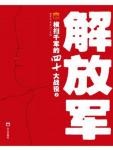Chapter 1 preamble
The 40 major battles in which the People's Liberation Army swept thousands of troops
姚有志
1070Words
2018-03-18
We have made historic progress in building a prosperous and strong republic.But there is a long way to go, and now we need to carry forward the spirit of not being afraid of difficulties, not afraid of setbacks, fighting bravely, making good use of wisdom, seeking change and innovation, and striving for victory.
In the Wenchuan earthquake relief, the Chinese People's Liberation Army was brave, fearless, loyal and strong, not afraid of fatigue, not afraid of sacrifice, and fighting continuously...isn't this the spirit we need to learn and carry forward!However, this is only a spiritual manifestation of the People's Liberation Army in peacetime. In fact, it is still far from its spiritual manifestation in war years.If we say that the People's Liberation Army's spiritual performance in peacetime is more sweating, then in wartime, the spiritual performance is more bloodshed; life as collateral.For this reason, if we want to comprehensively and solidly study and carry forward the spirit of the People's Liberation Army (this is actually promoting the spirit of the Chinese nation and the spirit of the times), we must go through decades of space-time tunnels and open the dusty war archives , to see how the People's Liberation Army overcame all difficulties and dangers and defeated the enemy with bravery and wisdom.I am afraid that the practical value of this will not be lightened by the long history of the People's Liberation Army's war.
In the more than three years of the liberation war, the Chinese People's Liberation Army relied on the spirit of being brave and tenacious, not afraid of sacrifice, not afraid of fatigue, and fighting continuously, from weak to strong, from small to large, and from victory to victory.In the war, most of the weapons used by the People's Liberation Army were still the millet plus rifles of the Red Army period, some of them were weapons seized from the enemy in the Agrarian Revolutionary War and the War of Resistance Against Japan, while the Kuomintang army mainly used American equipment and 1 million surrendered The Japanese army handed over a large number of modern weapons, including more than 900 bombers and fighter jets, more than 100 warships, tens of thousands of cannons, tanks, etc.At the beginning of the war, the People's Liberation Army had only 610,000 field troops, more than 660,000 local troops, and 4.3 million Kuomintang troops. The ratio of troops between the enemy and us was 3.4:1.With such power, the PLA has wiped out more than 8.07 million enemies in more than 800 major battles, and liberated all the territory except Taiwan, Penghu, Jinma, and other islands.
This book selects and narrates 40 representative major battles fought by the People's Liberation Army in the Chinese People's Liberation War for more than three years. A life-and-death struggle for the future and destiny of the Republic.Through these 40 major battles, it reflects more comprehensively the development process of the People's Liberation Army from small to large, from weak to strong in the war, and the heroic spirit of winning victory with overwhelming and destructive momentum. The heroic scenes of the rivers, lakes and seas, and the heroic scenes of fighting tenaciously, and the wonderful clips of wits and courage on the second front, and the enemy's defection, especially vividly depict Mao Zedong, Zhu De, and Zhou Enlai in the world's smallest headquarters. Director of the superb wisdom of the strategic decisive battle that shocked the world, the moving scenes of the frontline generals obeying the overall situation, decisive decision-making, flexible command, and taking the lead...
The compilation of this book refers to a large number of historical materials (attached), and I would like to express my gratitude to the authors and editors of these historical materials!
author
In early 2009 in Beijing

